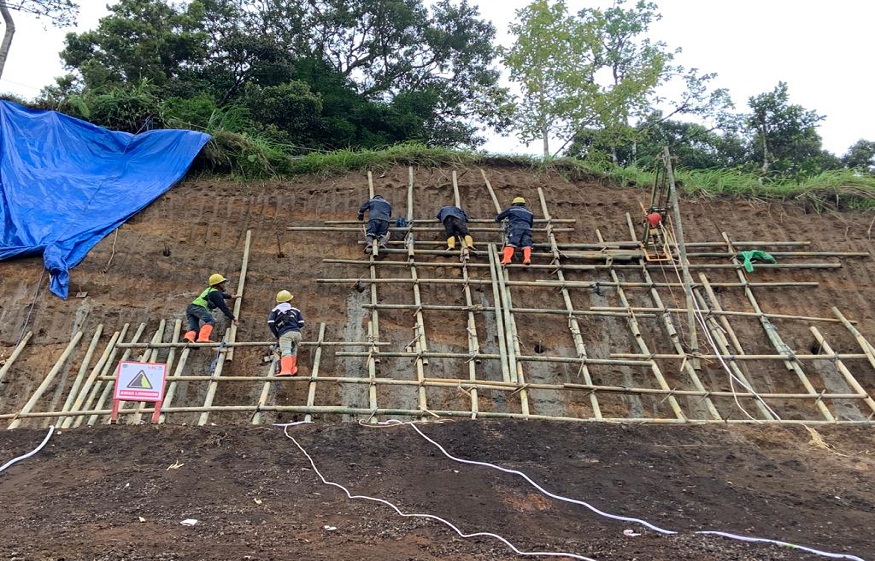Ground Slope Stabilization: Techniques for Lasting Stability
Understanding the Importance of Ground Slope Stabilization
Unstable slopes pose significant risks to properties, infrastructure, and natural landscapes. Without proper intervention, soil erosion, landslides, and structural damage can occur, leading to costly repairs and environmental degradation. Ground slope stabilization involves a combination of engineering solutions and natural techniques designed to reinforce the stability of sloped terrain, preventing unwanted movement and ensuring long-term safety.
Soil composition, weather patterns, and land use all contribute to slope instability. Heavy rainfall can lead to water saturation, weakening the soil and causing it to shift. Steep gradients increase the likelihood of slippage, while deforestation and construction activities remove crucial stabilizing vegetation. Understanding these factors helps determine the best stabilization methods to address specific challenges and maintain structural integrity.
Implementing effective stabilization measures requires careful assessment of the terrain. Engineers and geotechnical experts analyze soil properties, drainage conditions, and load-bearing capacity before recommending appropriate techniques. Whether for residential landscaping, road embankments, or large-scale infrastructure projects, ground slope stabilization plays a critical role in preventing erosion and maintaining the durability of built environments.
Proven Methods for Stabilizing Slopes
A variety of techniques can be applied to stabilize slopes, depending on the severity of the issue and site-specific conditions. One effective method involves using retaining structures, such as gravity walls, cantilever walls, and anchored walls. These structures provide lateral support by holding back soil and preventing displacement, making them ideal for steep slopes and areas prone to erosion.
Soil reinforcement techniques enhance the strength of the ground, reducing its susceptibility to movement. Geosynthetic materials, including geogrids and geotextiles, are commonly used to improve soil stability. These materials interlock with soil particles, distributing weight evenly and preventing slippage. Reinforced soil slopes allow for greater flexibility in design while offering long-term resilience against environmental stressors.
Vegetation-based solutions contribute to slope stability by improving root cohesion and enhancing water absorption. Deep-rooted plants, grasses, and shrubs anchor soil layers together, reducing surface runoff and minimizing erosion. Bioengineering methods, such as live staking and brush layering, integrate plant materials with structural reinforcements to create a sustainable approach to ground slope stabilization.
Drainage Solutions for Slope Protection
Managing water flow is crucial for maintaining slope stability. Excess moisture can weaken soil structure, leading to erosion and landslides. Proper drainage systems divert water away from vulnerable areas, reducing the risk of soil saturation and displacement. Surface drainage solutions, such as swales and channels, help direct runoff safely, preventing excessive pooling and soil erosion.
Subsurface drainage techniques address water accumulation beneath the ground surface. French drains and perforated pipe systems allow water to escape from soil layers, preserving the integrity of slopes. These systems are particularly useful in areas with high groundwater levels, where prolonged saturation can compromise stability.
Terracing is another effective strategy for managing water on sloped terrain. By creating stepped levels, terracing reduces the velocity of runoff and increases infiltration, allowing moisture to be absorbed gradually. This technique is widely used in agricultural settings and landscaping projects to enhance soil retention and promote sustainable land use.
Long-Term Maintenance for Stabilized Slopes
Ongoing maintenance is essential to ensure the effectiveness of ground slope stabilization measures. Regular inspections identify potential weaknesses, such as soil displacement, drainage blockages, or vegetation loss. Addressing minor issues promptly prevents more significant problems from developing, reducing the likelihood of slope failure.
Vegetation management plays a key role in sustaining stabilization efforts. Replanting and maintaining deep-rooted plants reinforce soil structure and prevent erosion. Trimming and pruning vegetation help maintain an optimal balance between root growth and surface coverage, ensuring continued support for the slope.
Monitoring drainage systems ensures proper water flow and prevents sediment buildup. Clearing debris from channels and drains minimizes blockages, maintaining the functionality of water management infrastructure. If necessary, adjustments to drainage layouts can be made to accommodate changing environmental conditions and land use requirements.
Preserving the integrity of retaining structures and soil reinforcements is also critical. Routine assessments of wall stability, geosynthetic materials, and erosion control features help identify signs of wear or damage. Reinforcement or replacement of compromised elements extends the lifespan of stabilization efforts, ensuring lasting protection for slopes and surrounding areas.



